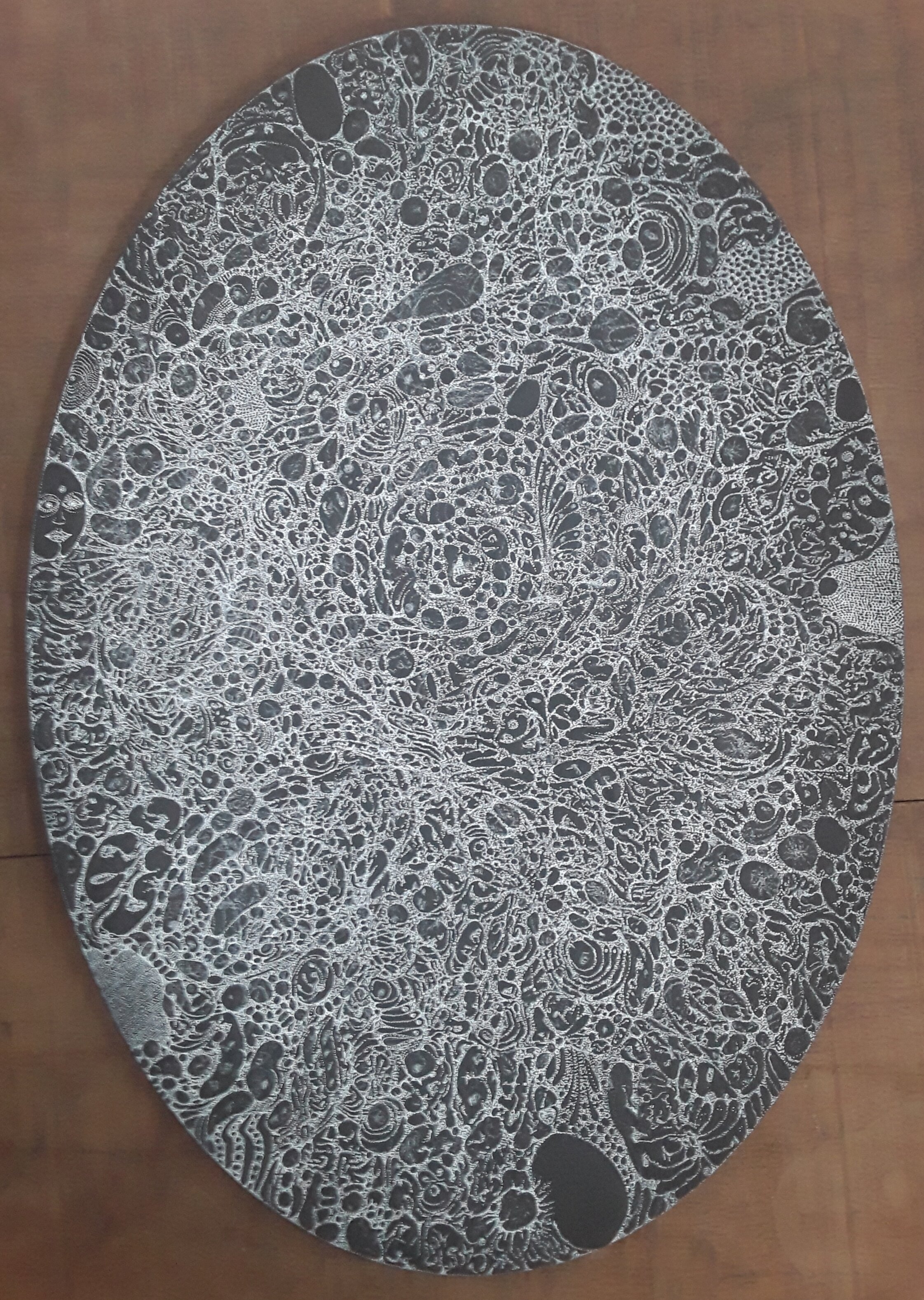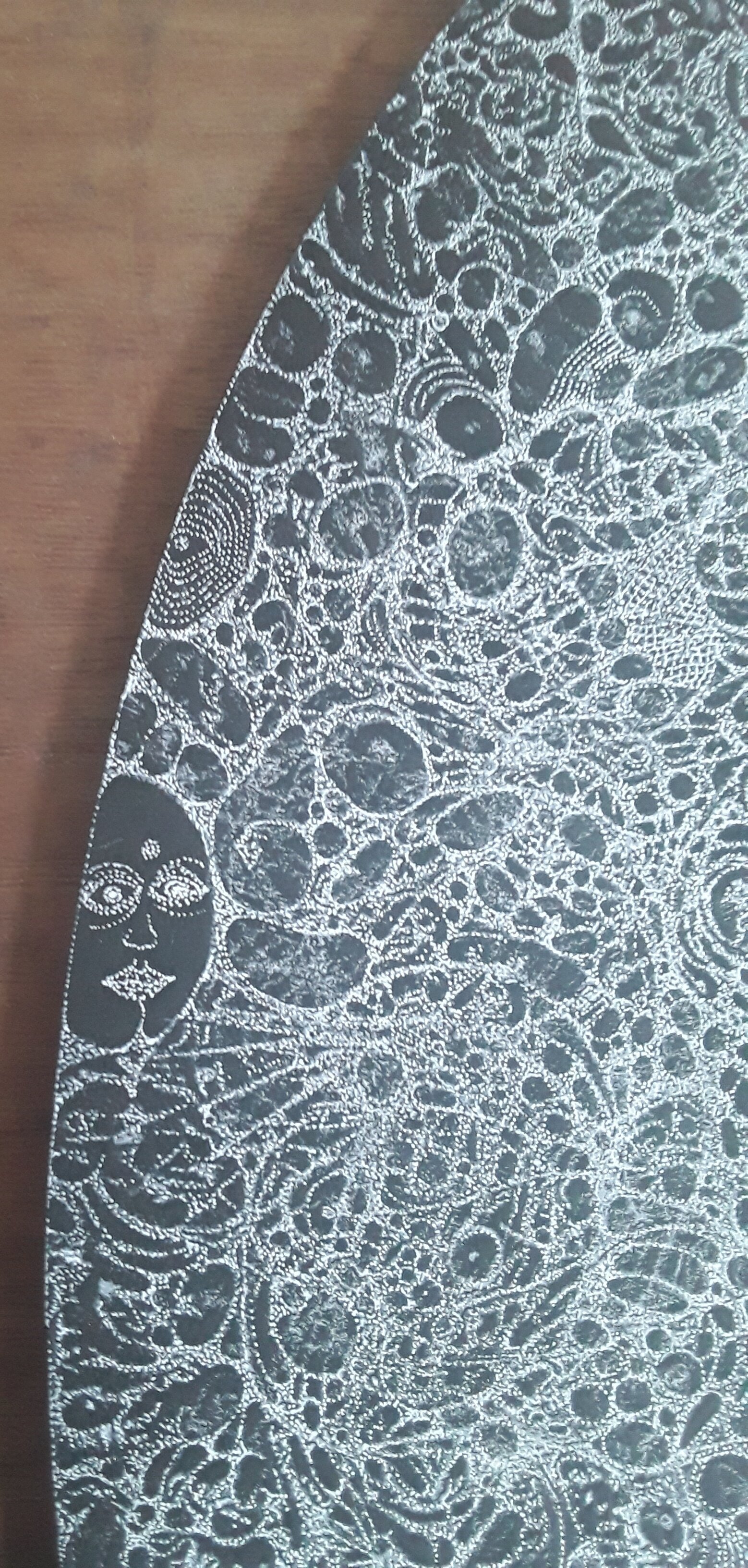IN CONVERSATION - Chris Neate
British artist Chris Neate makes up part six of my ‘In conversation’ series with artists who I support through my Gallery. Chris did attend art school in the 70’s, but his work has taken a different turn later in life, with his works being described as ‘automatic drawing.’ Read on to hear about Chris staying creative, missing junk shops and wanting to get back to seeing people in real life very soon …
Chris at the launch of Monochromatic Minds
How do you think your practice has changed because of covid-19?
That’s interesting. I’m not convinced it has changed although clearly having less distractions in terms of being able to go out and about means I am drawing more intensely than I would at other times. In terms of the themes in my work, I don’t think it has. It has been an odd experience for me as it coincided with a house move the day before lockdown started, to a town I barely knew, in a new environment. It is nice to be by the sea and have fresh air, but most of my things are locked in storage, so it feels very impermanent at the moment. I’m not sure this has shown in my work. I think my work anchors me and it continues to do so irrespective of the current situation. I think it has balanced me, as to find yourself in a property without your belongings and with remnants of previous owners still here, was strange and I felt like I was being cast adrift, but I continued to draw as I had the foresight to put some drawings materials in a separate bag to bring with me.
So I don’t necessarily think the content has changed, it remains the same, but the world around it has changed.
I have taken this question from the talkart podcast that I like listening to… have you learnt any new skills during lockdown?
I now have the awareness that I continue to do my work irrespective of the situation I am in. I thought previously that the work came because I was inspired by external stimulation, but actually the work comes regardless of that or not.
Is there anything that you are currently missing doing that you are not able to because of lockdown?
I’d like to be able to go to junk shops and street markets and go to London and get on the tube. I’d like to see exhibitions and see a Philip Glass opera. I’d like to go back in time and go to a good punk club and go further back in time to be 1974 and go on a Saturday to Biba’s on Kensington High Street and look at all the marvelously fashionable people. What I miss is people moving about in an ordinary way and not worried to walk near you on the pavement as so many people seem to have become unhinged at the moment. I miss the barbers too!
Can you tell me about featuring in Monochromatic Minds earlier this year and what that experience was like?
I thought it was a really good show. I thought it was marvelous to be included and I thought my work displayed well. I am always impressed to have work in the same exhibition as Madge Gill or Cathy Ward. It was a very comprehensive exhibition and had many aspects to it that came together really well.
As Time Was, 2020
From your perspective as an artist, what more could galleries and museums do to support artists at present?
You do things, ask me to take part in things like this interview and send me opportunities to see if I want to be a part of them. A lot of artists are quite isolated at the moment, so will be getting less contact and many cannot get online due to lack of equipment or ability issues to use technology – even for me technology is really difficult. If galleries start to fail or close, then I’m not sure what I would do.
Face to face support is essential for all people, not just disabled, and it’s okay to think oh I’m doing it all online, but you lose huge levels of communication online. Even Facetime is not the same as being with a person – you miss the feeling and emotion this way.
Attending a really good inspiring show opens not only your eyes, but your mind. The small overlooked details in a piece of work are often the most important and the atmosphere of the work as it sits in a gallery space is so important as it is in the setting that unspoken communication with the work takes place. The viewer is drawn to the work sometimes physically moving towards it and staying with it being immersed in it. You cannot do this via a screen, you are detached.
Finally, what can we expect from you next?
I was due to be part of an art fair in Paris called Drawing Now, which is now postponed until March next year which is a shame, but understandable.
I like to try different things and the work I currently do is quite time-consuming so I’ve tried a work in paint. But in theory I’ll continue to create and do what I do at the moment until such a time makes me change. Like my work changed after a marvelous show at the College of Psychic Studies in London last summer - with the white pencil lines now underneath and pen drawing over the top.
I do like the drawings that I am doing at the moment but I am interested in moving away from white on black to sepia on white.
And Still They Dance, 2020




